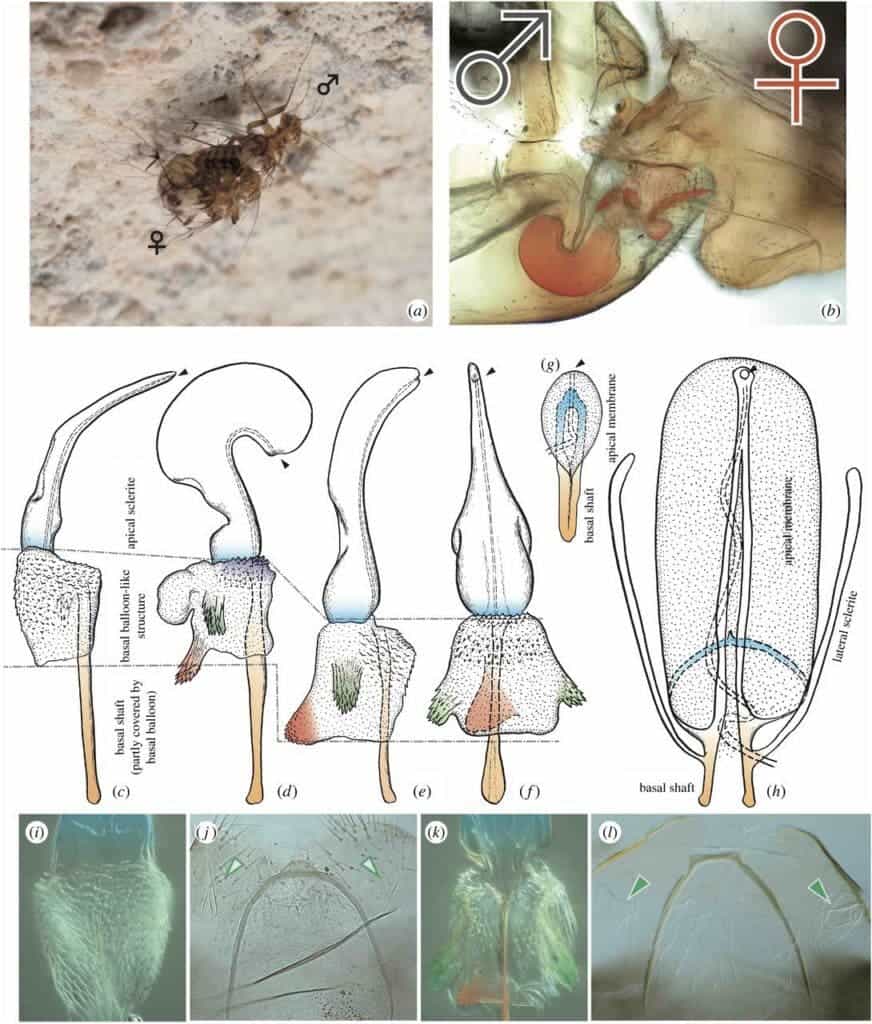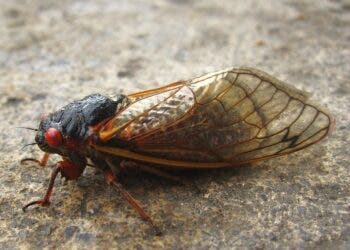
Inside caves in Brazil, researchers have come across two peculiar insect species whose sexual organs are reversed. Unlike almost every other animal, the females have penis-like appendages and males have vagina-like pouches. In a new study, an international team of researchers from Japan, Brazil, and Switzerland investigated the evolutionary history of the two species. To their surprise, they found that the sex reversal in these insects evolved independently from one another.
Reversed sexual selection
The researchers studied three insects (Afrotrogla, Neotrogla, and Sensitibilla), all belonging to the same genera. Afrotrogla and Neotrogla are particularly noteworthy because the females have a penis-like organ, termed a gynosome. This organ is used to anchor male vagina-like genitalia in a species-specific manner for up to days at a time, during which “voluminous and probably nutritious semen is passed to the female,” the authors of the new study wrote in Biology Letters.
Although Sensitibilla belongs to the same tribus as Afrotrogla and Neotrogla, these insects do not have reversed organs. By studying the sex organs of all three, the researchers came to the conclusion that sexual organ reversal in the two identified insect species had evolved independently, and not before the species diverged.
Genital traits differ between sexes due to conflicting mating strategies. In most species of animals, male reproductive success increases with the number of mates, whereas female fitness does not improve with the number of mates (and can even be detrimental due to limited ova). In response, some males developed traits in their genitalia that enable them coercively mate with females, such as claspers and spines. In response, females developed traits for resistance or tolerance, such as pouches that accommodate spines or anti-clasping projections.
However, in the dry and resource-scarce caves where Afrotrogla and Neotrogla live, the environment seems to have forced an organ reversal. Because food is scarce, males appear to have invested more resources into securing nutrients than for mating. In retaliation, the female had to assume the traditional role of the male. What’s more, in order to prevent the male from escaping with his sperm, the females evolved a hook that latches onto the male. Predation in the cave ecosystem may also have played a role in the odd sexual organ differentiation seen in these insects.
Males generally have higher potential reproductive and optimal mating rates than females. Therefore, sexual selection acts strongly on males. But for Afrotrogla and Neotrogla, their genital adaptations have been driven by reversed sexual selection with females competing for sperm. Writing in another paper published last month in the journal eLife, the same team of researchers reported that “the ability to obtain greater amounts of semen thanks to the valve [a switching valve at the entrance of the semen-storage organ] has led to fierce competition over semen among females, facilitating the evolution of the female penis.” Nothing similar is known among sex-role-reversed animals.






